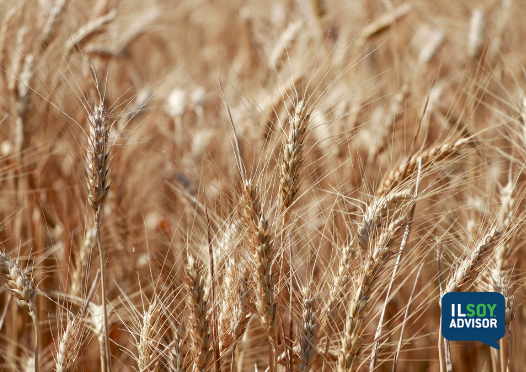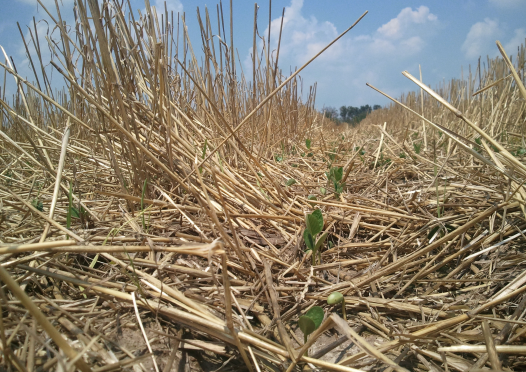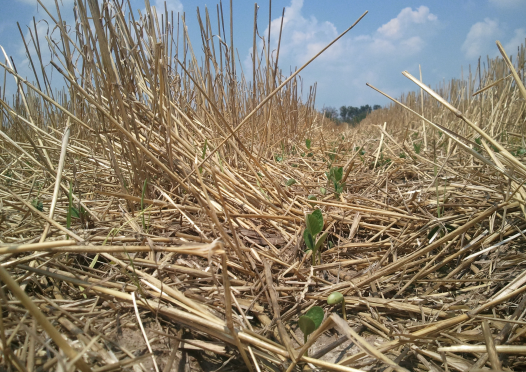ILSOYADVISOR POST
Agronomics: Taking a second look at double-cropping
Double-cropping soybeans after wheat is one option for some Illinois growers to boost farm profits.
"Double-crop soybeans have a long and solid history in southern Illinois," says Emerson Nafziger, University of Illinois Extension agronomist. "Wheat crop harvest is followed by at least half a season of growing weather. Having a crop such as soybeans in the field is the way to take advantage of this weather to produce some additional profit."
More than 80 percent of Illinois wheat is produced in the southern half of Illinois—from the Springfield area and southward, according to the Illinois Wheat Association. The longer growing season makes a wheat-soybean rotation possible; although good management is key to realizing the best returns.
An ongoing study of common cropping systems in southern and central Illinois shows an average wheat yield of 62 bushels per acre, while double-crop soybeans (without irrigation) have a 28-bushel-per-acre average. The same trial showed full-season soybeans with about 40 bushels per acre.
Most farmers can expect double-cropped soybeans to yield on average about 60 to 70 percent of the average yields for full-season beans, says Nafziger. He adds that double-crop soybeans that yield at least 50 percent of the full-season yield average for the area should be profitable.
Nafziger suggests farmers manage their crop to take full advantage of the growing season:
- Harvest wheat as early as possible. Double cropping helps make the most of the full growing season, so getting the field ready for soybean planting as early as possible can make or break the success of this rotation. In addition to running planters behind combines, Nafziger says some farmers save a few days by harvesting wheat at 18 – 19 percent moisture with rotary combines.
- Earlier planting is better. Even a few days can make all the difference in a double-crop system. Nafziger says it can pay to get the crop in the ground a few days earlier, especially when earlier planting allows farmers to capture a rainfall to help get soybeans off to a strong start.
- Stick with a full-season variety. Nafziger advises planting a full-season variety, even in a double-crop rotation. All soybeans planted late will flower early, but early-maturing soybeans are more likely to stay short, set fewer pods and not yield as much, he says.
- Protect the crop. Weed pressures are affected by late planting. Herbicides can be tailored to crop yield potential and what weeds are present. Different pest pressures, such as potential aphid outbreaks in September, also are possible.





Comments
Add new comment